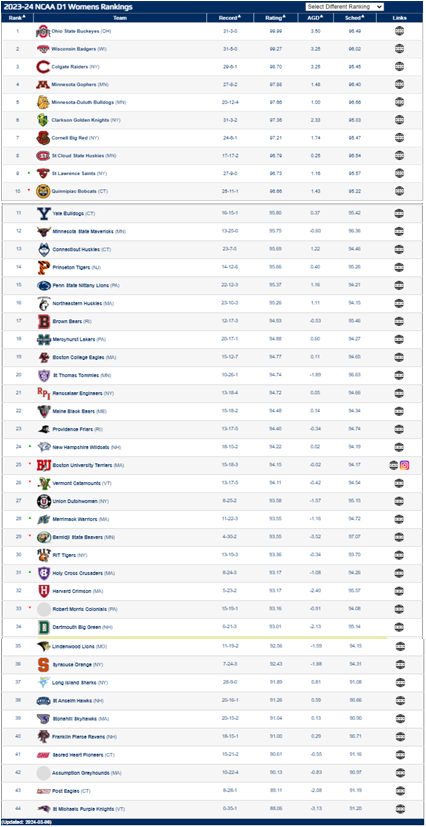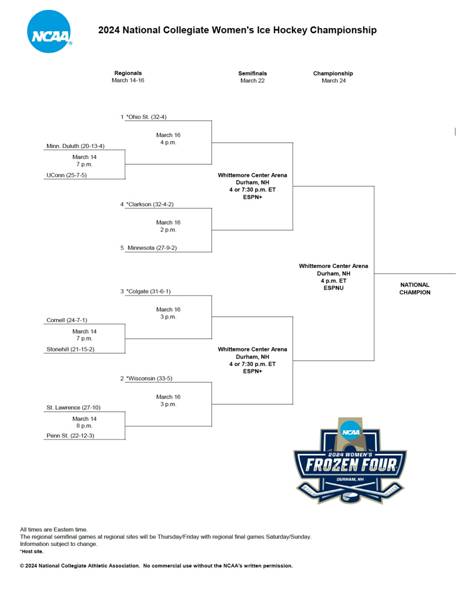With the announcement of the 11 teams participating in the 2024 NCAA Women’s DI Hockey Championship, I decided to take a look to see if the at-large team bids made sense. In the past, there seemed to be at least one or two teams that got snubbed. This year, it looks as though the committee pretty much got it right with the 6 teams added beyond the 5 conference champions.
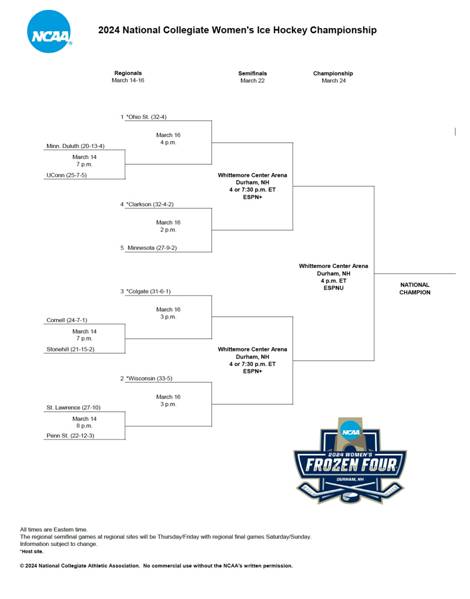
At the same I was also curious about how different the level of competition was between conferences. While I know the WCHA is known as being the best conference in the country, I wondered how big a difference the level of play was between conferences this past season. There were a couple of surprises. And I believe they could have implications for a player’s recruiting process.
For this analysis I used the MyHockeyRanking algorithm for the team rankings. The NCAA’s methodology is completely different and explained here. Neither the NCAA’s methodology nor MHR’s algorithm is perfect. I have discussed in detail the pros and cons of MHR in the past, but I personally believe it is the most accurate view of the full-season performance of a team. Especially since I am sure that every NCAA DI team plays to win and not to ‘the score’ (i.e. goal differential) like what happens occasionally in youth hockey.
Did the right teams get selected?
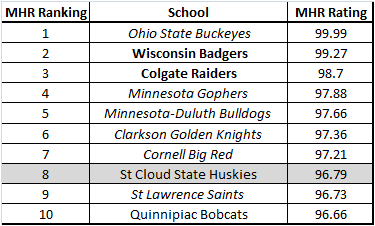
Note: Bold = Conference Champion Italics = At-Large Bid
When you exclude the conference champions, pretty much the next 6 best teams were selected for the tournament. There could be an argument made for St Cloud State. Given that there were already 4 WCHA teams selected, statistically they were essentially tied with Clarkson, and the NCAA uses the pairwise ranking (which is difficult to calculate, so I don’t fully understand it), I am okay with their decision. While pairwise ranking might reward wins, in my opinion it doesn’t weight strength-of-schedule sufficiently.
Analyzing the Seedings
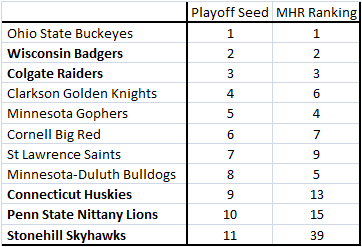
Note: Bold = Conference Champion
Looking at the seeding, the most-obvious disconnect was with Minnesota-Duluth being given an 8th seed but having a #5 ranking. Once again, it would not surprise me if the NCAA did not want 4 of the 5 top seeds to be from the WCHA. Unfortunately, this means UMD will likely play Ohio State in the 2nd round instead of a Clarkson or a Colgate if they were seeded higher.
From a recruiting perspective, it was interesting to see the large variability in the average ratings for each conference.
Comparing Conference Competition
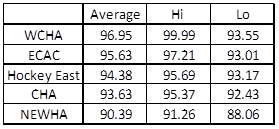
As you can see, the competition in the WCHA is >1 goal more than the next best conference, the ECAC. In other words, on average a WCHA will beat and ECAC team by ~1.32 goals.
In addition, for this past season, the NEWHA conference performed at a significantly lower level of play than all the other conference by 3+ goals. In fact, all 8 NEWHA teams were ranked as the bottom 37-44 teams in DI NCAA Women’s Hockey according to MyHockeyRankings. In an upcoming post, I will compare playing in the NEWHA at the DI level to playing at a top DIII school from a recruiting perspective. I do think there are some nuances that are important to consider when choosing a school and making the right choice for your personal situation.
This is the full list of MyHockeyRankding for DI Women’s Hockey for the 2023-24 Season:
